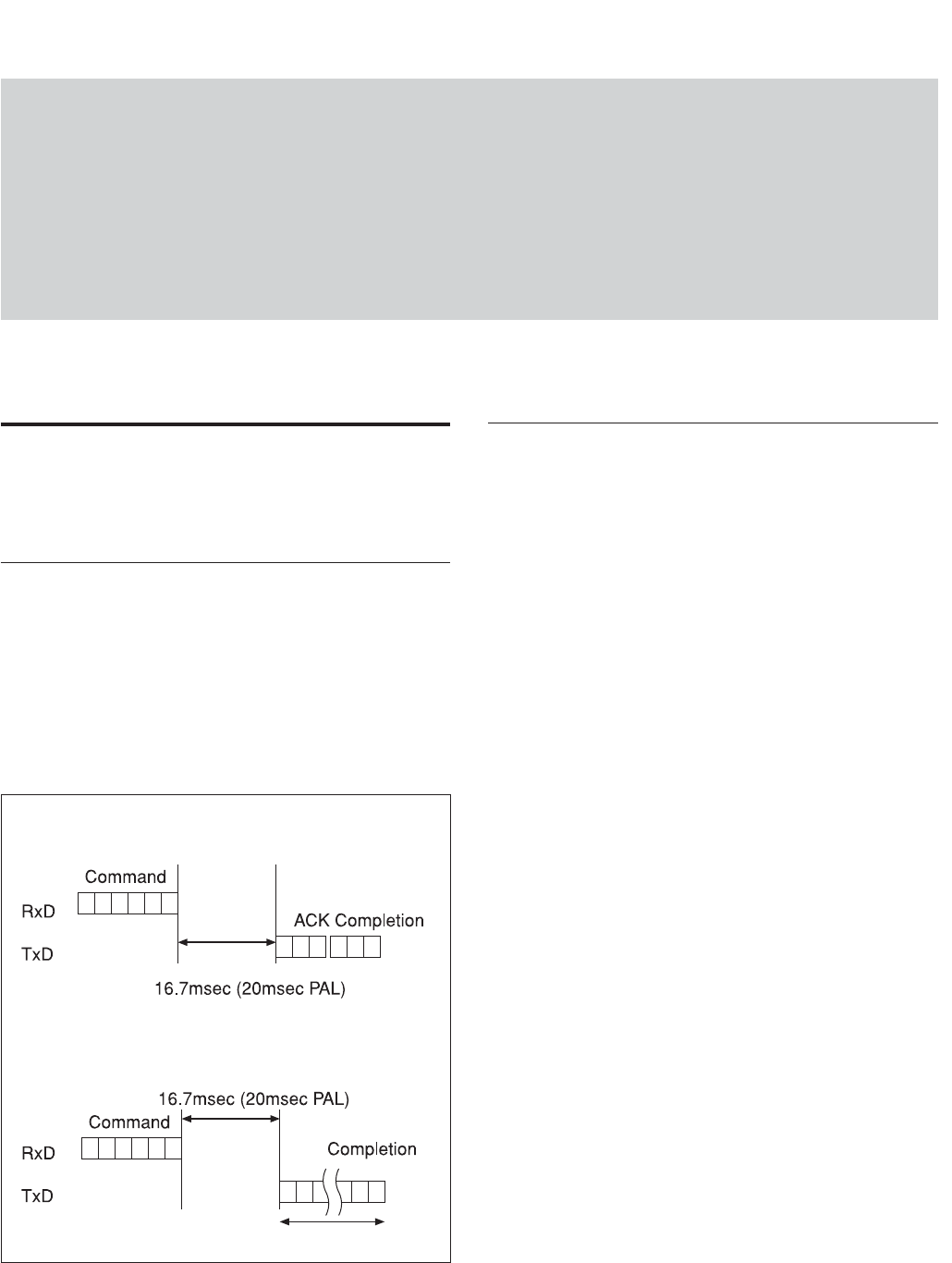
6
Basic Functions
Basic Functions
Overview of Functions
VISCA commands are the basis of camera control.
Timing Chart
As VISCA Command processing can only be carried
out one time in a Vertical cycle, it takes the maximum
1V cycle time for an ACK/Completion to be returned.
If the Command ACK/Completion communication
time can be cut shorter than the 1V cycle time, then
every 1V cycle can receive a Command.
In general
• Power On/Off
Powers the camera on and off. When the power is off,
the camera is able to accept only the lowest level of
VISCA Commands; the display and other features are
turned off.
• I/F Clear
Clears the Command buffer of the FCB camera.
Clearing the buffer can also be carried out from the
control application software when the power is on.
• Address Set
VISCA is a protocol, which normally supports a
daisy chain of up to seven connected cameras via RS-
232C interface. In such cases, the address set
command can be used to assign addresses from 1 to 7
to each of the seven cameras, allowing you to control
the seven cameras with the same personal computer.
Although the FCB camera does not support direct
connection of cameras in a daisy chain, be sure to use
the address set command to set the address whenever
a camera is connected for the first time.
• ID Write
Sets the camera ID.
• Mute
Blanks the screen and sends out a synchronizing
signal.
• Lens Initialize
Initializes the zoom and focus of the lens. Even when
power is already on, it initializes the zoom and the
focus.
• Comp Scan
A pixel blemish-masking feature, which can be made
to reevaluate overall CCD pixel blemishes and mask
severely flawed pixels automatically upon receiving
the COMP SCAN command. This feature helps to
mask the flaws found in CCD imagers, even after the
camera has been powered on for some time.
Query Commands
General Commands
16 Byte
Within
Within


















